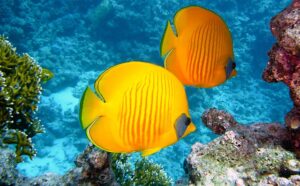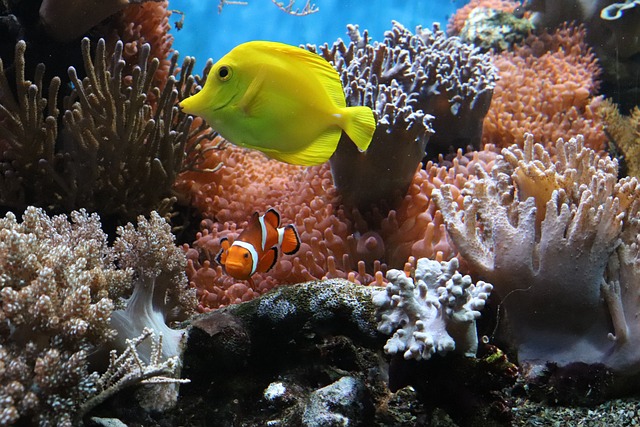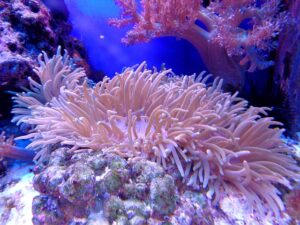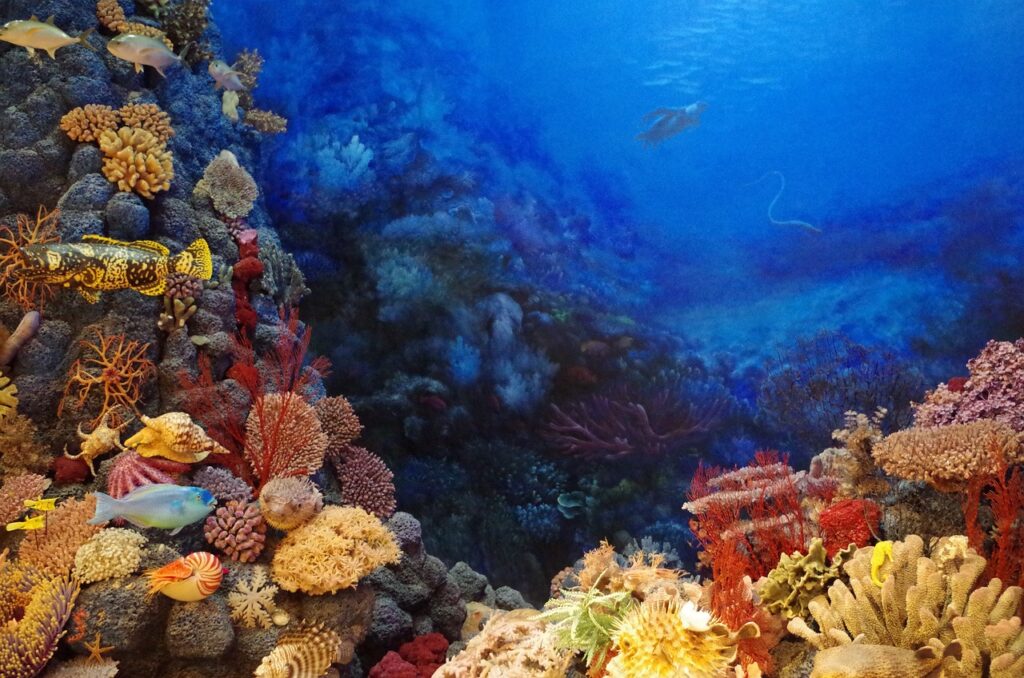Just like any other living organism, corals require specific conditions to thrive. Reef aquarium expert and 2009 MASNA Aquarist of the Year Matt Pedersen explained in his 2016 Reef-A-Palooza seminar, “The Ultimate Guide to Reef Aquarium Chemistry,” that corals require stable and optimum conditions to grow and remain healthy. This includes providing the best led lighting for reef tank, water flow, and water chemistry. However, what many fellow reefers may not realize is that the placement of corals within the aquarium can also greatly affect their health and growth.
We might think that whatever looks great to us is also perfect for the coral, but this is not always the case. So, if you want your reef to thrive, keep reading. We’ll share some tips for optimal coral placement in your aquarium.
Consider Light Requirements
 Different coral species have varying light requirements, so it’s more than just necessary to research or at least understand the specific needs of your corals. Some corals thrive in high-intensity light, while others prefer more subdued lighting conditions. When positioning your corals, consider factors such as the type of lighting fixtures you are using, their intensity, spectrum, and duration. Placing light-loving corals too close to powerful lights can lead to bleaching or tissue damage, while insufficient light may hinder photosynthesis and overall vitality. Regularly monitor the intensity and quality of light reaching your corals to ensure they are receiving adequate illumination for optimal growth.
Different coral species have varying light requirements, so it’s more than just necessary to research or at least understand the specific needs of your corals. Some corals thrive in high-intensity light, while others prefer more subdued lighting conditions. When positioning your corals, consider factors such as the type of lighting fixtures you are using, their intensity, spectrum, and duration. Placing light-loving corals too close to powerful lights can lead to bleaching or tissue damage, while insufficient light may hinder photosynthesis and overall vitality. Regularly monitor the intensity and quality of light reaching your corals to ensure they are receiving adequate illumination for optimal growth.
Ensure Proper Water Flow
Did you know that insufficient water movement can lead to stagnant areas where debris accumulates, potentially causing harm to coral colonies? To ensure optimal conditions, strategically place powerheads or wavemakers to create gentle currents throughout the tank. Adequate water flow helps corals receive essential nutrients and oxygen while carrying away waste products. By simulating natural wave action, you mimic the ocean’s dynamic environment within your aquarium, promoting coral resilience and overall well-being. Additionally, proper circulation aids in preventing algae overgrowth by discouraging nutrient buildup in dead spots.

Provide Space for Growth
When placing corals in your tank, you can’t forget to consider their potential size once fully grown. Some species can expand significantly over time, so allowing ample room between corals prevents overcrowding and competition for resources. In fact, insufficient spacing can lead to aggressive interactions among corals, causing stress and potential harm. By strategically arranging coral placements with enough distance between them, you promote better water circulation and light exposure throughout the tank. This not only supports the individual health of each coral but also contributes to the overall balance of the ecosystem. Furthermore, proper spacing enables easier maintenance tasks such as cleaning and fragging.
Observe Compatibility and Stabilize Coral Placement
 Last but not least, observing compatibility among different coral species is also something you can’t forget to ensure their overall health and growth. Some corals may release toxins or exhibit aggressive behavior towards neighboring corals, which can lead to stress or even death. Understanding the specific needs and unique behaviors of each coral type before placing them in close proximity can help prevent conflicts. Stabilizing coral placements involves ensuring that corals are securely attached to the substrate or live rock within the tank. Corals should be positioned in a way that minimizes movement caused by water flow or other external factors. By anchoring corals properly, you can prevent them from toppling over and causing damage to themselves or nearby inhabitants.
Last but not least, observing compatibility among different coral species is also something you can’t forget to ensure their overall health and growth. Some corals may release toxins or exhibit aggressive behavior towards neighboring corals, which can lead to stress or even death. Understanding the specific needs and unique behaviors of each coral type before placing them in close proximity can help prevent conflicts. Stabilizing coral placements involves ensuring that corals are securely attached to the substrate or live rock within the tank. Corals should be positioned in a way that minimizes movement caused by water flow or other external factors. By anchoring corals properly, you can prevent them from toppling over and causing damage to themselves or nearby inhabitants.
In optimizing coral placement within a reef tank, it is crucial to consider various factors such as light requirements, water flow, space for growth, compatibility with neighboring corals, and stabilization techniques. By carefully addressing these aspects, coral health and growth can be promoted effectively in a thriving aquatic environment.

